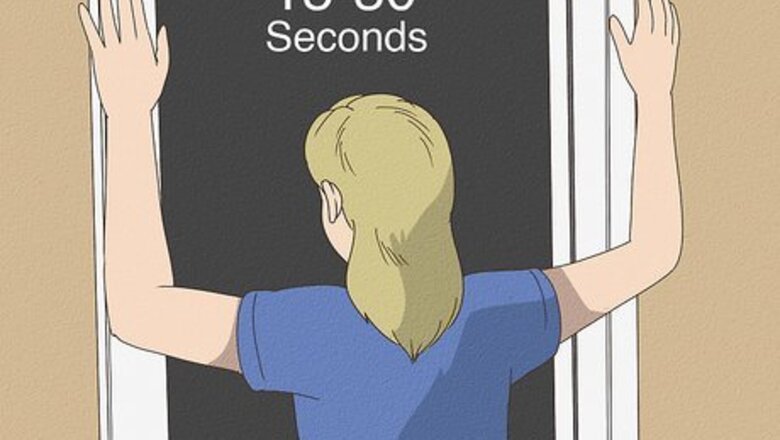
views
Easing Discomfort in Your Rhomboid
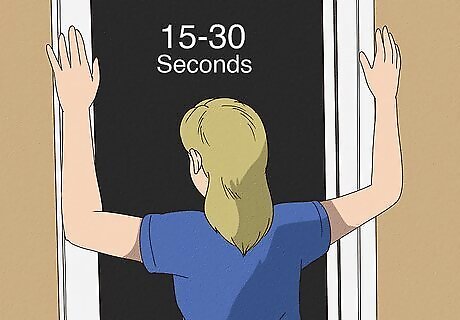
Start with a pectoralis stretch. Stand in a corner or open doorway and rest your hands on the walls or door frame slightly above your head. Breathe deeply, and lean forward slowly until you feel a stretch in the front of your shoulders. Hold the stretch for 15 to 30 seconds, continuing to breathe deeply, then release. Do 3 repetitions, holding each time for 15 to 30 seconds. A weak pectoralis major contributes to that rounded-shoulder posture, and can overload the rhomboid muscles.
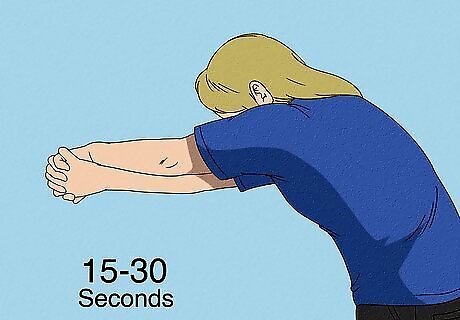
Stretch your lower neck and upper back. Stand with your feet about hip-width apart. Stretch your arms in front of you and clasp one hand over the other. Reach out until you feel your shoulder blades pulling away from each other, then bend your head slightly forward. Hold the stretch for 15 to 30 seconds, breathing deeply. Repeat the stretch 2 to 4 times, then switch arms so that the hand that was clasped on the bottom is now clasped on the top.
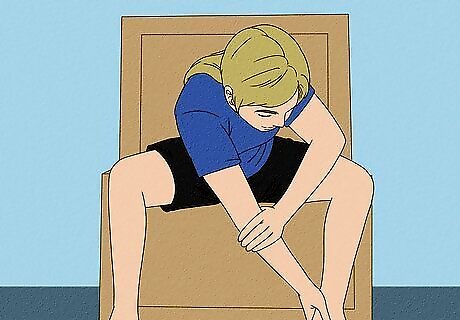
Target your rhomboid muscles directly. Sit in a flat, level chair. Move to the edge of the seat so your feet are flat on the floor and your knees are at right angles. Spread your legs a little more than hip-width apart. Reach over and grab your left ankle with your right hand. With your left hand, press into your right elbow crease until you feel a stretch between your spine and shoulder blade on the right side. Hold the stretch for 15 seconds, breathing deeply. Then return to start and repeat. Do 2 - 3 repetitions, then switch and do the same stretch on the other side.
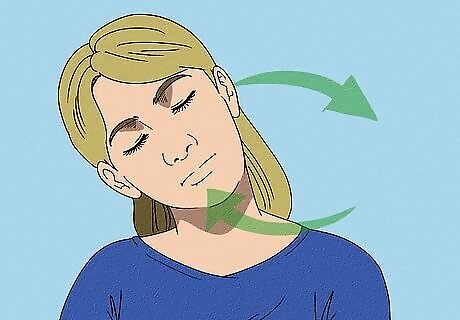
Do neck stretches and rotations. To stretch your neck, look straight ahead, then tip your right ear toward your right shoulder. Hold 15 to 30 seconds, then repeat on the other side. For neck rotations, turn your head to the right with your chin level, hold for 15 to 30 seconds, then repeat on the other side. Repeat each of these exercises 2 to 4 times on each side. Increasing your neck strength and mobility will reduce pressure and strain on your rhomboids. You can do neck stretches and rotations while sitting or standing, whichever is more comfortable for you. If sitting, use a flat chair that allows you to sit up straight with good posture and both feet on the floor.
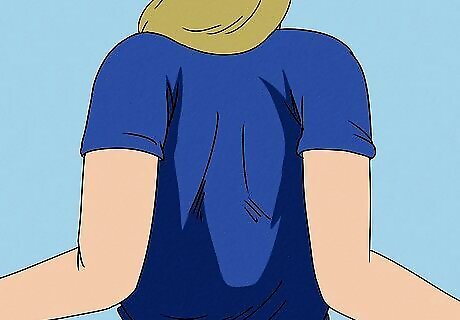
Contract your rhomboids with a scapular squeeze. While either sitting or standing with your arms by your sides, squeeze your shoulder blades together towards your spine. Hold the squeeze for 5 seconds, then release. Do 2 sets of 15 repetitions of this exercise. Make sure you're not holding your breath as you squeeze. Keep your breaths deep and smooth.
Increasing Shoulder Flexibility and Mobility
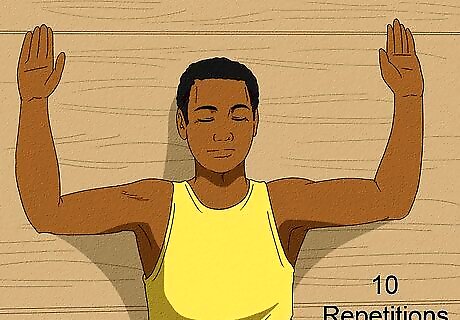
Start with wall extensions to improve flexibility. Stand with your back and heels flat against a wall. Extend your arms out to either side with the backs of your hands towards the wall. Bend your elbows to 90 degrees, then raise your arms slowly above your head, keeping them flat against the wall. Do 2 sets of 5 to 10 repetitions of this exercise. Only go as high as you can without pain, while still keeping your arms, elbows, and wrists against the wall. If you have good flexibility, you'll be able to touch your hands together above your head while keeping your arms, elbows, and wrists against the wall at all times.
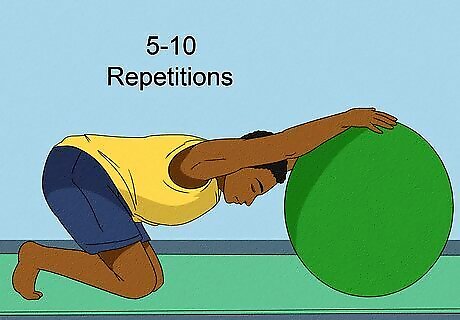
Do super child's pose. Kneel on the ground with a stability ball on the ground in front of you. Place your hands on the ball and extend your arms until you feel a stretch in your shoulders and upper back.
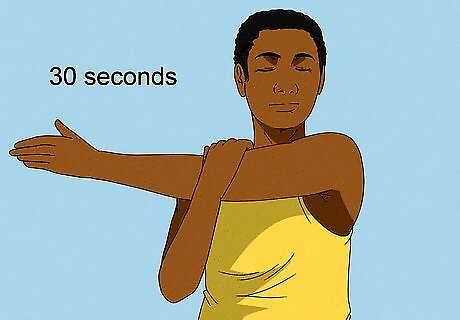
Stretch the rotator cuff with cross-arm stretches. Stand with your feet about shoulder-width apart, then pull one arm across your body while also pulling your shoulder blade back. Hold the stretch for 30 seconds, breathing deeply. Do 3 repetitions of this stretch, then switch and do the other arm. Stretching the rotator cuff will improve the flexibility in your shoulders and decrease the strain on your rhomboid muscles.
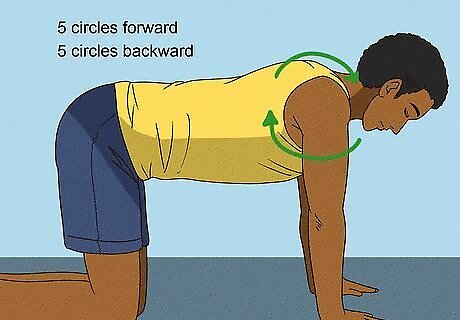
Do shoulder circles on your hands and knees. Get down on the floor on all fours with your wrists directly under your shoulders and your knees directly under your hips. Keeping your elbows straight, press into the floor and shrug your shoulders up towards your ears. Then roll your shoulders back towards your hips and back forward, creating a circle. Do 5 circles starting forward with both shoulders. Then switch direction and do 5 circles starting backward. After doing both shoulders, do 5 each with one shoulder at a time, keeping the other shoulder stable.
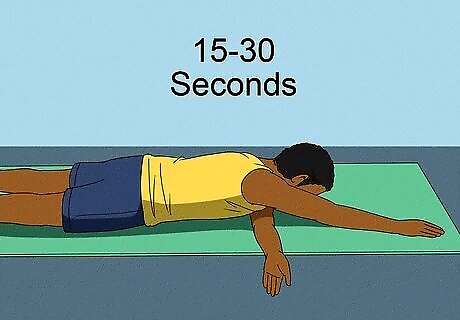
Stretch your rotator cuff further with the L-arm stretch. Lie on your stomach and stretch one arm underneath your body and across your chest, palm facing up. Use your shoulder muscles to pull your chest down towards the floor as low as you can without pain. Hold the stretch for 30 seconds, then release. Move in and out of the stretched position for 10 reps, holding for 30 seconds each time. Then switch and do the same stretch with the other arm. This stretch may feel awkward at first, but play around until you find a comfortable position. For example, you may find this stretch easier if you bend the leg opposite the arm across your chest to open up your hips.
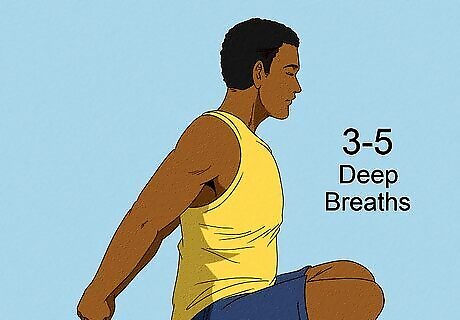
Open your chest with a clasped hands extension. Sit on the floor, or on a chair or bench that doesn't have a back. Clasp your hands palm to palm behind your back, then straighten your elbows. Squeeze your shoulder blades together. Hold the stretch for 15 to 30 seconds, then release. Repeat the stretch 5 times, holding each stretch for 15 to 30 seconds. Breathe through the stretch – don't hold your breath. This stretch not only improves shoulder position but also builds chest and shoulder muscles to improve your posture. Sit in whatever position feels comfortable for you, as long as your hips are balanced and you can sit straight with good posture.
Improving Posture
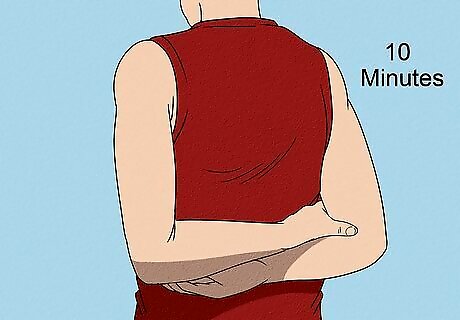
Counteract hunched shoulders with back bound hand stretches. From a seated or standing position, roll your shoulder blades back and down towards your spine. Bring your arms behind you, grabbing your right elbow with your left hand and your left elbow with your right hand to bind the position. Lift your chest and press your shoulder blades down and together for 3 to 5 deep breaths. Switch and do the opposite side, by grabbing your left elbow first with your right hand, and then your right elbow with your left hand. Hold for 3 to 5 deep breaths. Do 2 - 4 repetitions on each side. If grabbing your elbow is too difficult or causes pain, you can grab your wrists or forearms.
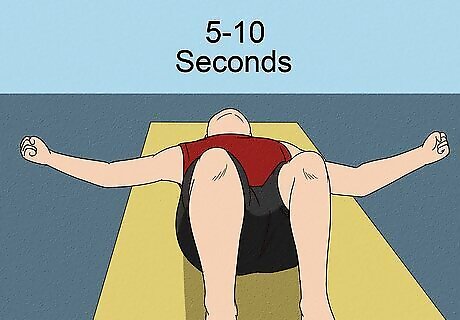
Open your chest with a supine "T" stretch. Lie on your back on the floor with your knees bent so that your feet are flat on the floor. Extend your arms out straight from your sides to form a "T" shape on the floor. Relax and breathe deeply for 10 minutes. You can place a rolled towel or foam roller under your back with the length running down your spine to increase the stretch. Make sure the towel or roller is long enough to support both your head and your hips.
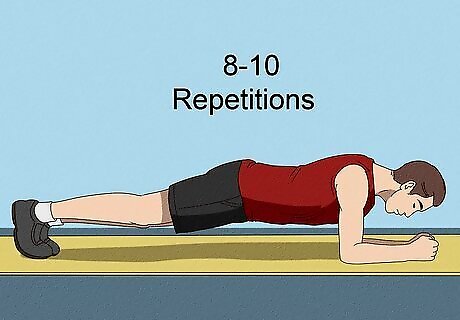
Do planks to strengthen your core. Lie face-down on the floor, then raise up so that your bodyweight is supported by your toes and your elbows with your forearms flat on the floor. Keep your elbows in line with your shoulders. Hold the position for 5 to 10 seconds, breathing deeply. Then release. To start, do 8 to 10 repetitions of this exercise. Gradually increase the amount of time you hold the plank. Strengthening your core will improve your overall posture and put less stress on your rhomboids.
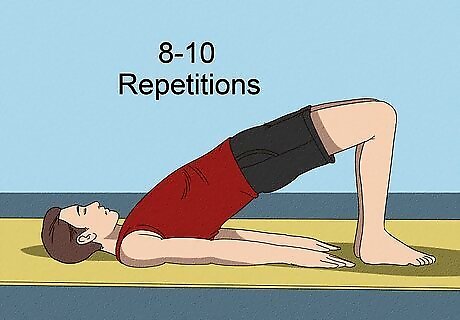
Try bridges to strengthen your lower back and core. Start on your back with your knees bent so your feet are flat on the floor about shoulder-width apart. Keep your arms flat on the floor at your sides, palms down. Slowly raise your hips gradually until there is a straight line from your knees to your shoulders. Activate your core, and slowly lower yourself back down to start. Do 8 to 10 repetitions of this exercise. Make sure you continue to breathe and don't hold your breath. Adjust this exercise to meet your fitness level. If you experience pain or discomfort, keep your bridge closer to the ground. You can slowly work up to a full bridge with a straight line through your hips as it feels comfortable for you. Don't rush it. You can also treat it like a plank, and try to hold the bridge position for 5 to 10 seconds before releasing. As you continue to practice, gradually increase the time you hold the position. Kelly Starrett Kelly Starrett, Physical Therapist To target inflexible, strained rhomboids in the upper back, interlock your fingers behind your head with elbows pointed outward. Gently press palms together while simultaneously squeezing shoulder blades toward spine. Move elbows back further stretching the area between them. Hold for at least 30 seconds, taking steady breaths. Relax arms down and repeat twice more. When performed regularly, this stretch elongates tight connective tissues surrounding the scapula and rib cage, providing relief.















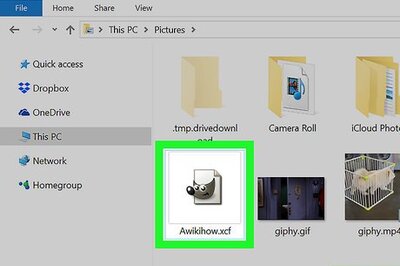


Comments
0 comment